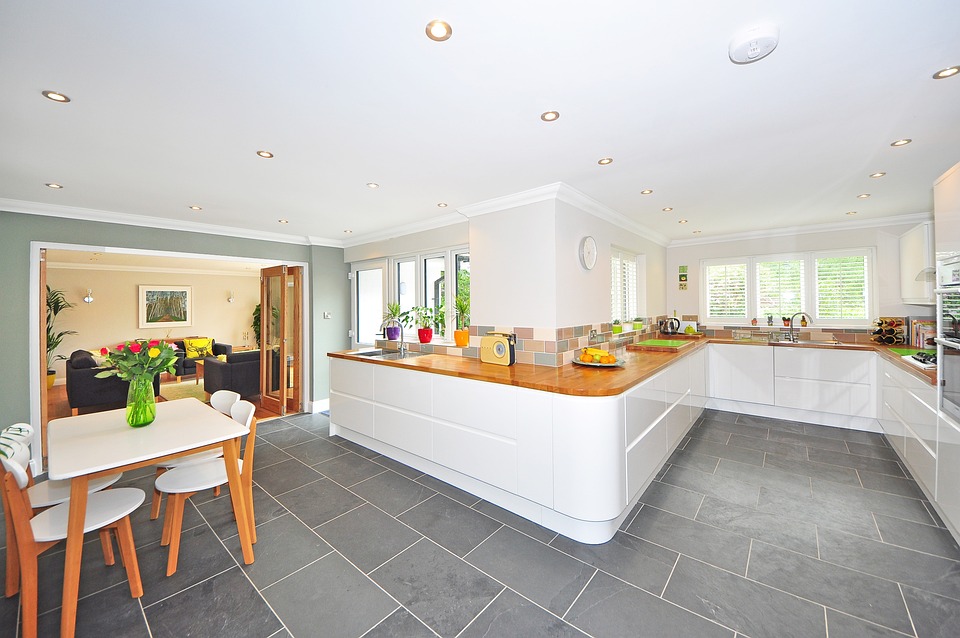Transitional Style: The Perfect Blend of Traditional and Contemporary Design
When it comes to interior design, finding the perfect balance between traditional and contemporary can be a challenge. However, there is a style that effortlessly combines the best of both worlds – transitional style. This design aesthetic embraces the warmth and familiarity of traditional design while incorporating the clean lines and simplicity of contemporary design. In this article, we will explore the key elements of transitional style and how you can incorporate it into your own home.
Key Elements of Transitional Style
1. Neutral Color Palette:
Transitional style often features a neutral color palette with shades of beige, gray, and cream. These colors create a soothing and timeless backdrop that allows other design elements to shine. While neutrals dominate the space, pops of color can be added through accessories like pillows, rugs, or artwork.
2. Blend of Materials:
In transitional design, a variety of materials are combined to create visual interest. This includes a mix of both natural and man-made materials such as wood, metal, glass, and stone. The contrast between these different textures adds depth and dimension to the space.
3. Clean Lines:
Unlike traditional design, which often features intricate detailing, transitional style embraces clean lines and simplicity. Furniture pieces in this style typically have straight, sleek profiles with minimal ornamentation. This creates a more contemporary and streamlined look.
4. Balanced Proportions:
Transitional design aims for a harmonious balance between the old and the new. This is achieved through careful consideration of proportions. For example, if you have a large, ornate mirror in the room, you might pair it with a modern, minimalistic console table to create a visually pleasing contrast.
5. Timeless Furniture:
Transitional style favors furniture pieces that are classic and timeless. Opt for pieces with simple, yet elegant designs that will stand the test of time. Avoid trendy or overly ornate furniture that may quickly go out of style.
6. Layered Textures:
To add depth and visual interest to transitional spaces, layering different textures is crucial. This can be achieved through the use of textiles like plush rugs, soft curtains, and cozy throw blankets. Mixing textures creates a sense of warmth and comfort.
7. Eclectic Accessories:
While transitional style leans more towards contemporary design, it still allows for the inclusion of traditional elements. Accessories like artwork, decorative objects, and lighting fixtures can be chosen to reflect your personal taste and add a touch of traditional charm to the space.
Incorporating Transitional Style into Your Home
Now that you have a good understanding of the key elements of transitional style, let’s explore how you can incorporate this design aesthetic into your own home:
1. Start with a neutral color palette:
Paint your walls in soft, neutral tones like beige or gray. This will create a blank canvas that allows you to layer in other design elements.
2. Invest in timeless furniture:
When choosing furniture, opt for pieces with clean lines and classic designs. Look for quality craftsmanship that will ensure longevity.
3. Mix and match materials:
Experiment with different materials to create contrast and visual interest. For example, pair a sleek glass coffee table with a rustic wooden side table.
4. Play with patterns and textures:
Add depth to your space by incorporating various patterns and textures through pillows, rugs, curtains, and upholstery. Mix different fabrics like velvet, linen, and leather.
5. Balance old and new:
Combine traditional and contemporary elements in your accessories. For example, hang a modern abstract painting above a classic fireplace mantel.
6. Let there be light:
Proper lighting is essential in transitional style. Incorporate a variety of lighting sources, such as floor lamps, table lamps, and overhead fixtures, to create a warm and inviting ambiance.
7. Personalize with accessories:
Add your personal touch with carefully chosen accessories. Display a collection of vintage books, incorporate family heirlooms, or showcase your favorite artwork.
By following these tips, you can create a space that beautifully blends traditional and contemporary design elements, resulting in a timeless and inviting atmosphere.
FAQs
1. What is the difference between transitional style and eclectic style?
While transitional style combines traditional and contemporary elements in a balanced and cohesive way, eclectic style is more about mixing and matching various design styles, colors, and patterns. Eclectic spaces often have a more whimsical and personalized feel.
2. Can I incorporate bold colors in transitional style?
While transitional style typically features a neutral color palette, it doesn’t mean you can’t incorporate bold colors. Use pops of color sparingly through accessories like pillows, artwork, or accent furniture to add visual interest without overwhelming the space.
3. Is transitional style suitable for all types of homes?
Yes, transitional style can be adapted to suit various types of homes, from traditional houses to modern apartments. Its versatility lies in its ability to blend seamlessly with different architectural styles.
4. Where can I find more inspiration for transitional style?
For more inspiration and ideas on transitional style, you can check out this website or explore interior design magazines and books that focus on transitional design.
5. Can I mix different furniture styles in transitional design?
Yes, mixing different furniture styles is encouraged in transitional design. However, it’s important to maintain a sense of balance and cohesiveness. Pay attention to proportions, colors, and materials to ensure a harmonious blend.
6. How can I create a transitional-style kitchen?
To create a transitional-style kitchen, opt for simple and timeless cabinets in neutral colors. Incorporate modern appliances and fixtures, and add warmth through natural materials like wood or stone for countertops and backsplashes. Balancing sleekness and traditional charm is key.
Remember, transitional style is all about finding the perfect balance between traditional and contemporary design. By incorporating the key elements and following the tips outlined in this article, you can create a space that exudes timeless elegance and modern sophistication.






